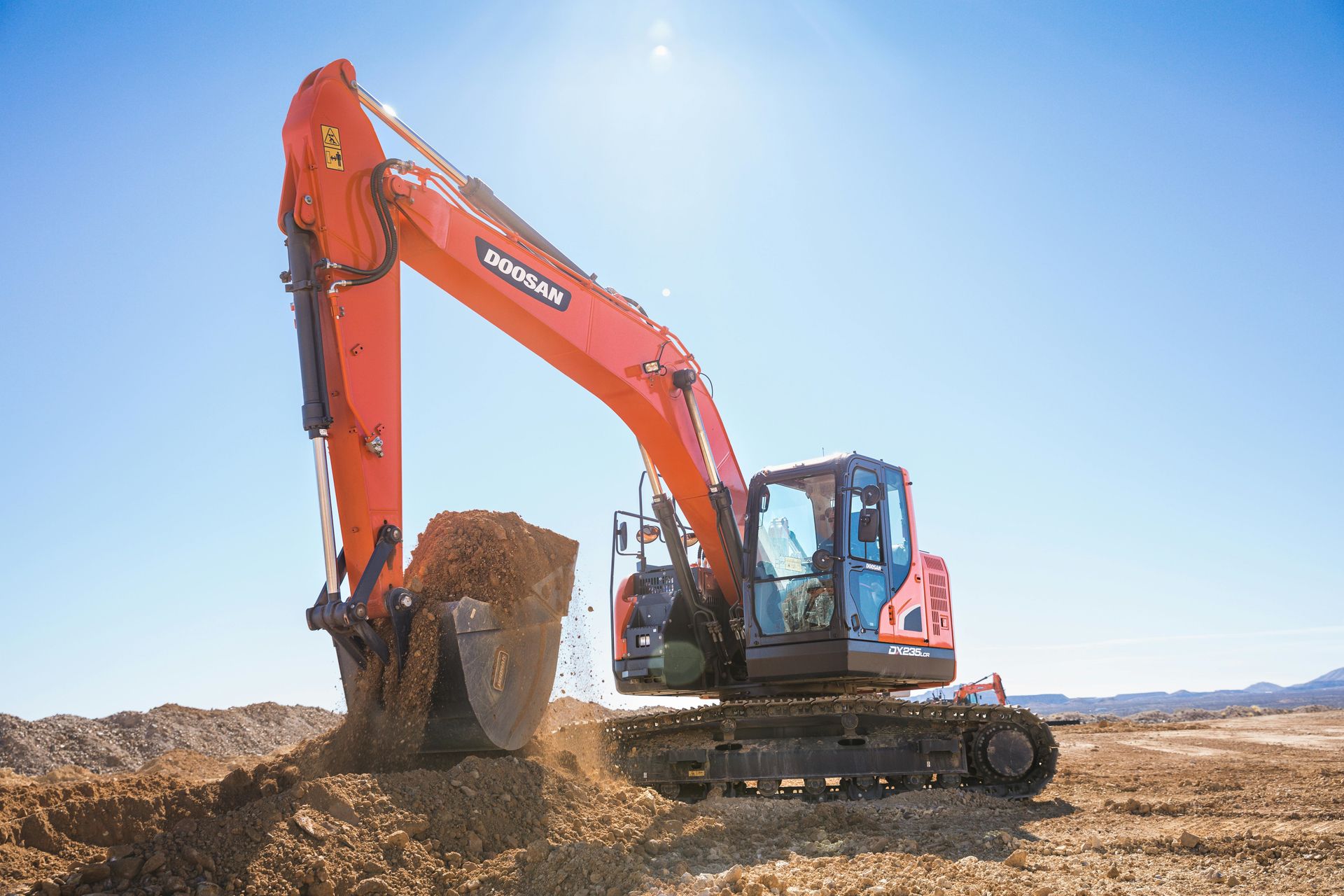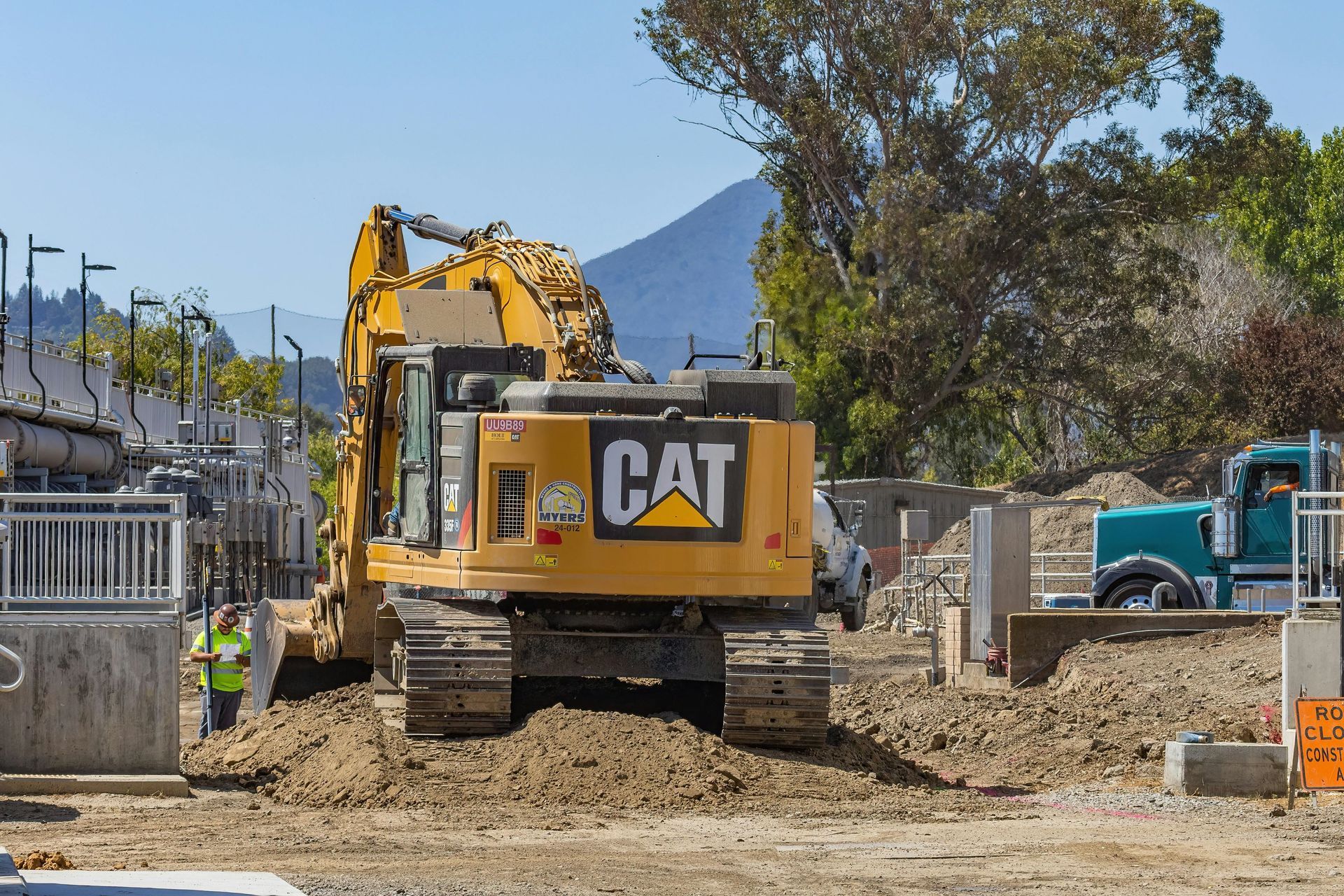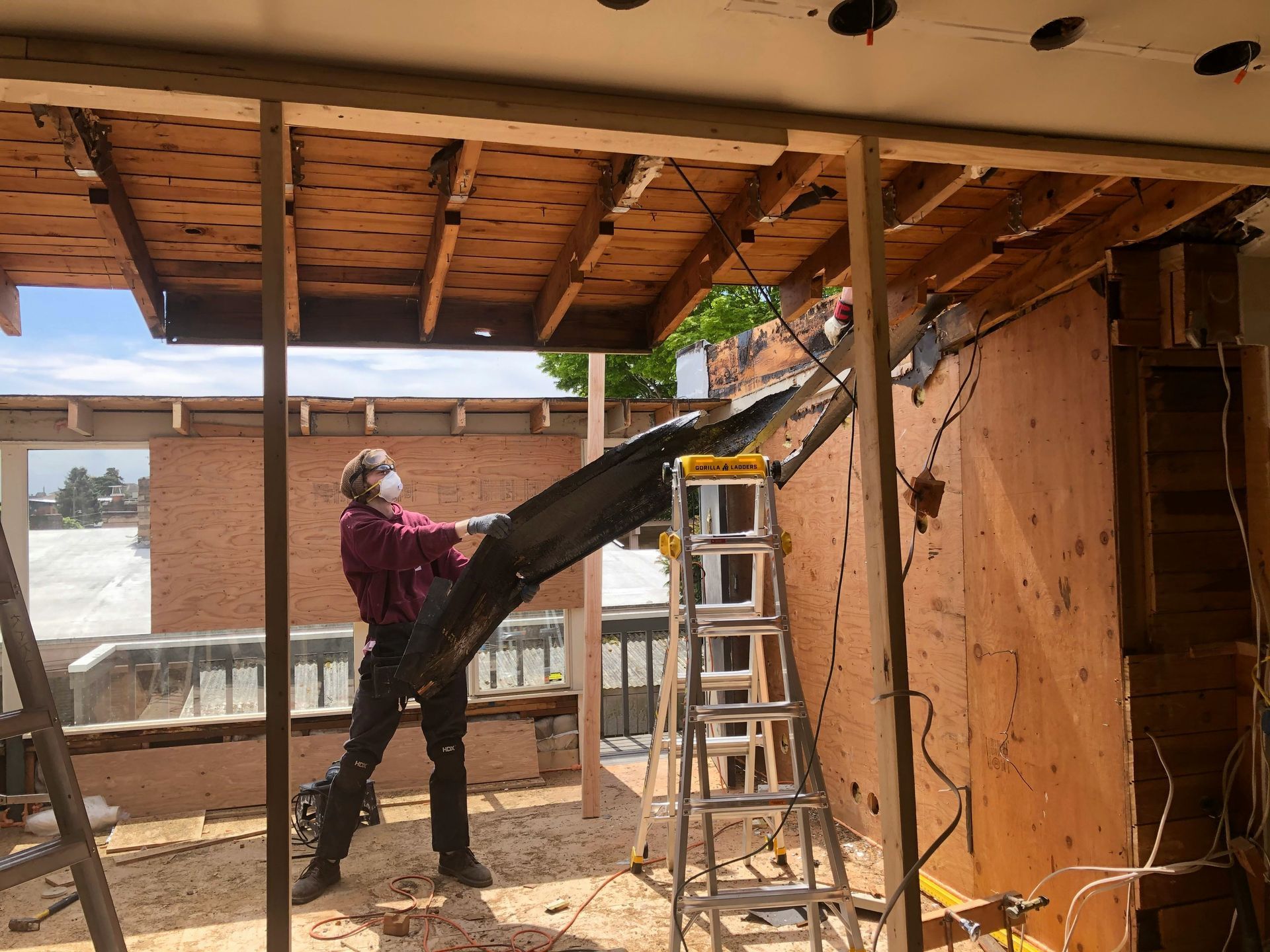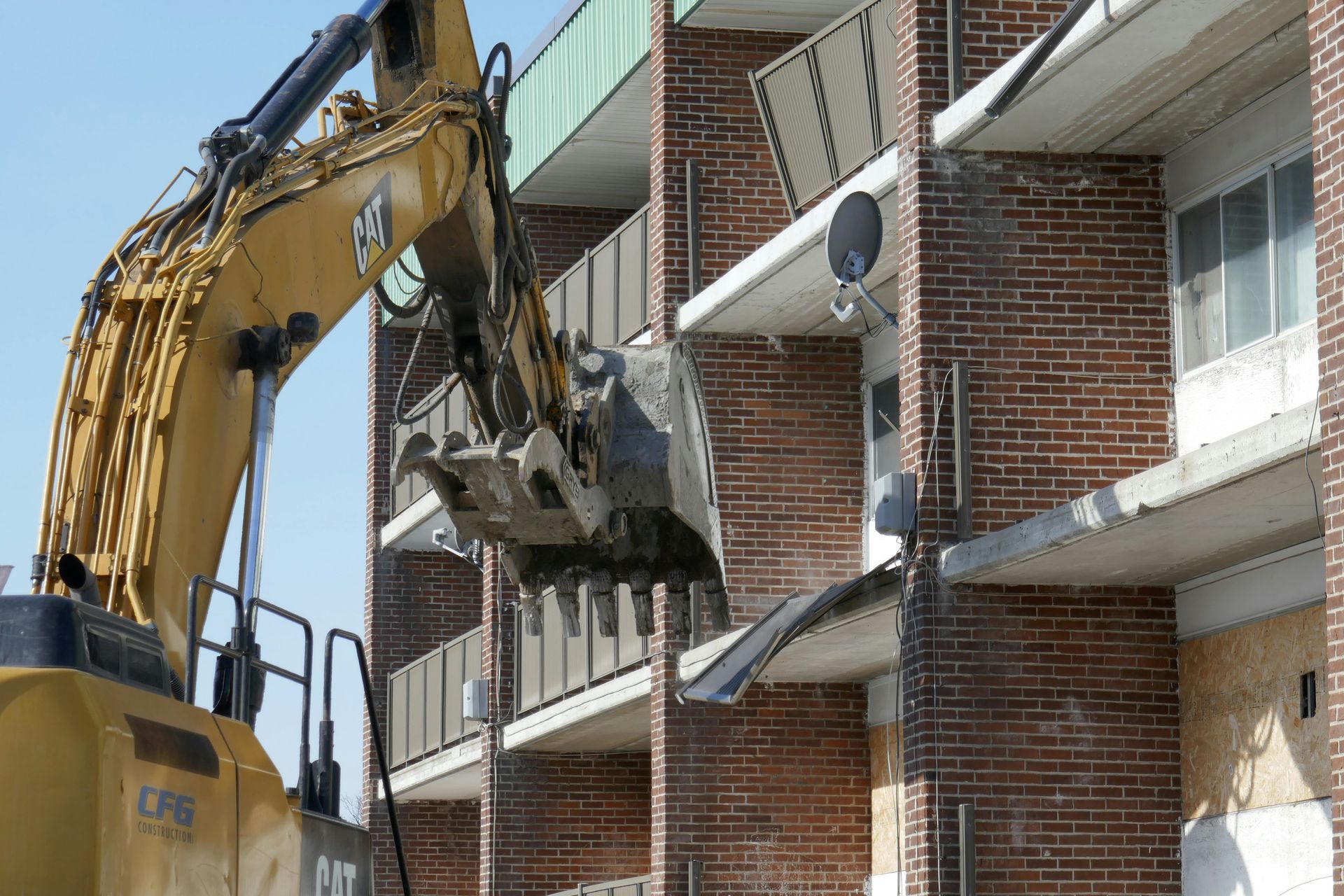Choosing the Right Bucket for Different Soil Types
In the world of demolition and construction, it sometimes requires excavation work and we all know that excavation is not an easy task. It’s essential to have someone who is adept in excavation work to ensure its success. It also doesn’t just need a skilled excavator to do the job, but it also requires knowing the right bucket to use. When it comes to excavation and earthmoving, the choice of bucket can significantly impact your efficiency and effectiveness. Did you know that different soil types require different bucket features to ensure optimal performance? Well, it does! That is why in this blog post, we will discuss soil types, and give you a guide to help you choose the right bucket for various soil types.

Understanding Different Soil Types
For most contractors, understanding the different kinds of soil is just another knowledge they have. However, for those new in the business, they may not be familiar with any of it and it is essential to know the different types of soil. Before diving into bucket selection, it's essential to understand the primary soil types you'll encounter. Here are the primary soil types you will most likely encounter when doing an excavation work:
- Clay: This type of soil is known as dense, sticky, and hard to penetrate.
- Sand: As for this type, it is loose, granular, and easy to dig.
- Silt: This type of soil has fine particles that are smooth to the touch and can be prone to compaction.
- Gravel: Coarse, with larger particles that provide good drainage but can be challenging to scoop.
- Loam: A balanced mixture of sand, silt, and clay, often considered ideal for agriculture.
Different Soil Types and Choosing the Right Bucket for Them
Now that you know the difference among the soil types, knowing the ideal bucket for each of them is the next step. Below are the different soil types and what right buckets should be used for them:
Clay Soils
Clay soils are dense and sticky, making them challenging to excavate. For clay:
- Bucket Type: Heavy-duty buckets are ideal for clay soils. They are designed to withstand the increased resistance and wear associated with digging through dense materials.
- Features: Look for buckets with stronger teeth and reinforced edges. These features help penetrate the tough, compacted clay and reduce wear on the bucket.
Sandy Soils
Sandy soils are loose and easy to dig but can quickly fill a bucket, making it heavy.
- Bucket Type: General-purpose buckets work well with sandy soils. These buckets are typically lighter and have wider, more open designs.
- Features: Consider buckets with larger capacities to make the most of the easy digging conditions. Reinforced sides can also help manage the wear from the abrasive nature of sand.
Silt Soils
Silt soils can be tricky due to their fine texture and potential for compaction.
- Bucket Type: Tilt buckets are particularly effective for silt soils. Their ability to angle and move helps manage the fine particles and reduce compaction.
- Features: Ensure the bucket has a sharp edge to cut through the soil cleanly. A smooth, curved bottom can help with the release of the fine particles.
Gravel Soils
Gravel can be tough on equipment due to its coarse and abrasive nature.
- Bucket Type: Rock buckets are the best choice for gravel soils. These buckets are specifically designed to handle heavy, abrasive materials.
- Features: Look for buckets with heavy-duty teeth and reinforced structures to handle the strain and prevent wear. Additionally, a grid or sieve bottom can help separate finer materials from larger rocks.
Loam Soils
Loam soils, being a balanced mix of sand, silt, and clay, are generally easier to work with.
- Bucket Type: General-purpose buckets are also suitable for loam. These buckets provide versatility and efficiency in handling the mixed soil type.
- Features: Consider a bucket with moderate teeth and a balanced design to handle the various components of loam without issue.
Additional Considerations When Selecting the Right Bucket
When selecting a bucket, it's also essential to consider the specific needs of your project. Below are the considerations you should make before choosing the right bucket for you excavation project:
- Size and Capacity: Match the bucket size and capacity to the scale of your project. Larger buckets can move more material quickly but require more power.
- Machine Compatibility: Ensure the bucket is compatible with your excavator or earthmoving equipment. Improper fit can lead to inefficiency and potential damage.
- Wear and Tear: Evaluate the expected wear and tear on the bucket. Some soils are more abrasive than others, so choosing a bucket with reinforced parts can extend its lifespan.
Different Types of Excavator Buckets
Choosing the right excavator bucket is crucial for optimizing your excavation work. Here’s a comprehensive guide to the various types of excavator buckets and their specific uses:
1. General Purpose Bucket
Description: Also known as a digging bucket, this is the most commonly used excavator bucket.
Uses:
- Suitable for light-duty digging and loading tasks.
- Works well with loose soil, clay, and silt.
- Ideal for general construction and landscaping projects.
Features:
- Smooth edges.
- Moderate size and capacity.
- Standard teeth for digging.
2. Heavy-Duty Bucket
Description: Built for tough and demanding jobs, heavy-duty buckets are designed to handle more stress than general-purpose buckets.
Uses:
- Excavating dense materials like compacted soil and clay.
- Heavy construction and mining projects.
- Handling abrasive materials.
Features:
- Reinforced structure and thicker steel.
- Robust teeth for better penetration.
- Larger capacity.
3. Rock Bucket
Description: Specifically designed to handle rock and other hard, abrasive materials.
Uses:
- Excavating and moving rocks, gravel, and other hard materials.
- Mining and quarrying operations.
- Heavy-duty construction tasks.
Features:
- Strong, durable teeth and reinforced edges.
- Grate or sieve design to separate finer materials.
- Heavy-duty build to withstand high impact and abrasion.
4. Skeleton Bucket
Description: A bucket with a skeletal structure to filter finer materials while retaining larger debris.
Uses:
- Sorting and sifting through materials.
- Separating rocks and debris from soil.
- Landscaping and agricultural projects.
Features:
- Spaced bars or grids on the bottom.
- Lighter weight for easier handling.
- Ideal for sorting and grading tasks.
5. V-Bucket (Trenching Bucket)
Description: Narrow and V-shaped, perfect for digging trenches.
Uses:
- Creating narrow, precise trenches for utilities and pipelines.
- Digging irrigation channels.
- Landscaping tasks requiring narrow digging.
Features:
- V-shaped design for precise trenching.
- Narrow width.
- Optional teeth for better digging efficiency.
6. Clean-Up Bucket
Description: Wide and smooth-edged, designed for final grading and clean-up tasks.
Uses:
- Finishing and smoothing surfaces.
- Moving loose materials like sand and gravel.
- Cleaning up construction sites.
Features:
- Wide, smooth edge for fine grading.
- No teeth, smooth bottom.
- Larger capacity for moving materials.
7. Tilting Bucket
Description: Equipped with a tilting mechanism, allowing the bucket to tilt up to 45 degrees.
Uses:
- Precise grading and shaping of landscapes.
- Working on slopes and uneven terrain.
- Ditching and finishing tasks.
Features:
- Hydraulic tilt mechanism.
- Versatile and adjustable angles.
- Suitable for complex grading tasks.
8. Riddle Bucket (Shaker Bucket)
Description: Similar to a skeleton bucket but with a finer grid, designed for sorting materials.
Uses:
- Sorting smaller debris from soil.
- Removing stones and roots from topsoil.
- Landscaping and agricultural applications.
Features:
- Finer grid for detailed sorting.
- Lighter construction.
- Efficient material separation.
Conclusion
Choosing the right bucket for different soil types is crucial for maximizing efficiency and minimizing equipment wear. By understanding the characteristics of each soil type and selecting the appropriate bucket, you can ensure that your excavation or earthmoving project runs smoothly. Whether dealing with dense clay, loose sand, fine silt, coarse gravel, or balanced loam, there's a bucket designed to meet your needs.
First Step Demolition
Taking on a demolition project is an immense task. Whether you are just dismantling a part of your home or an entire building, it requires a certain knowledge and expertise. In demolition, the use of an excavation bucket is sometimes needed. At First Step Demolition, we understand that the key to a successful project starts with choosing the right tools for the job. Selecting the appropriate bucket for different soil types is crucial for maximizing productivity, ensuring safety, and saving costs.
Are you ready to elevate your demolition or excavation project performance? Contact First Step Demolition today and let our experts guide you in selecting the perfect bucket for your soil type. Together, we’ll ensure your project runs smoothly, safely, and on schedule. Call us now at 623-248-5000 or visit our website at
www.firstdemoaz.com to learn more and get started!
Take the first step towards excavation excellence with First Step Demolition – where the right tools make all the difference!











